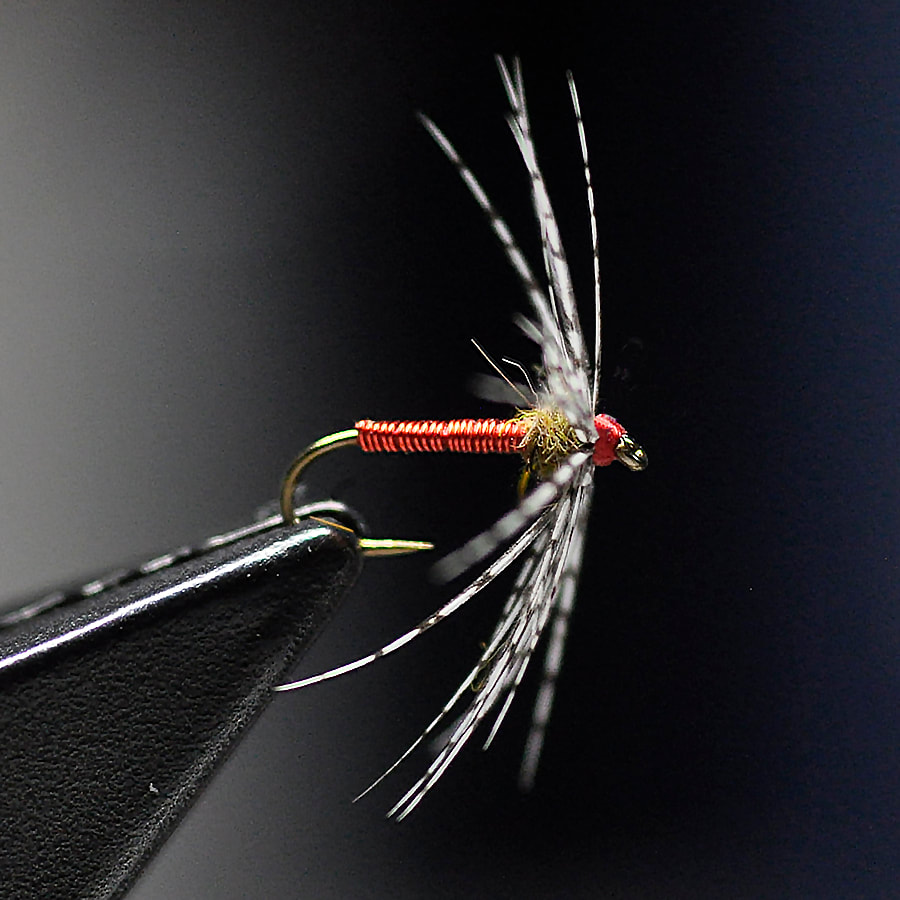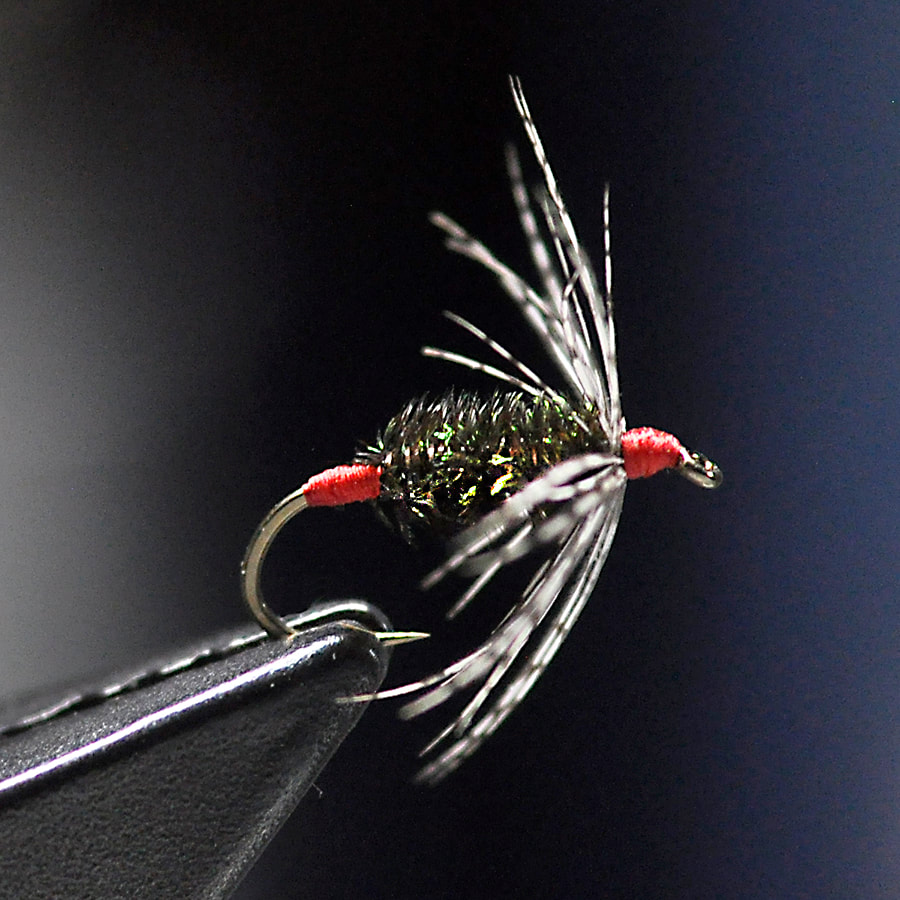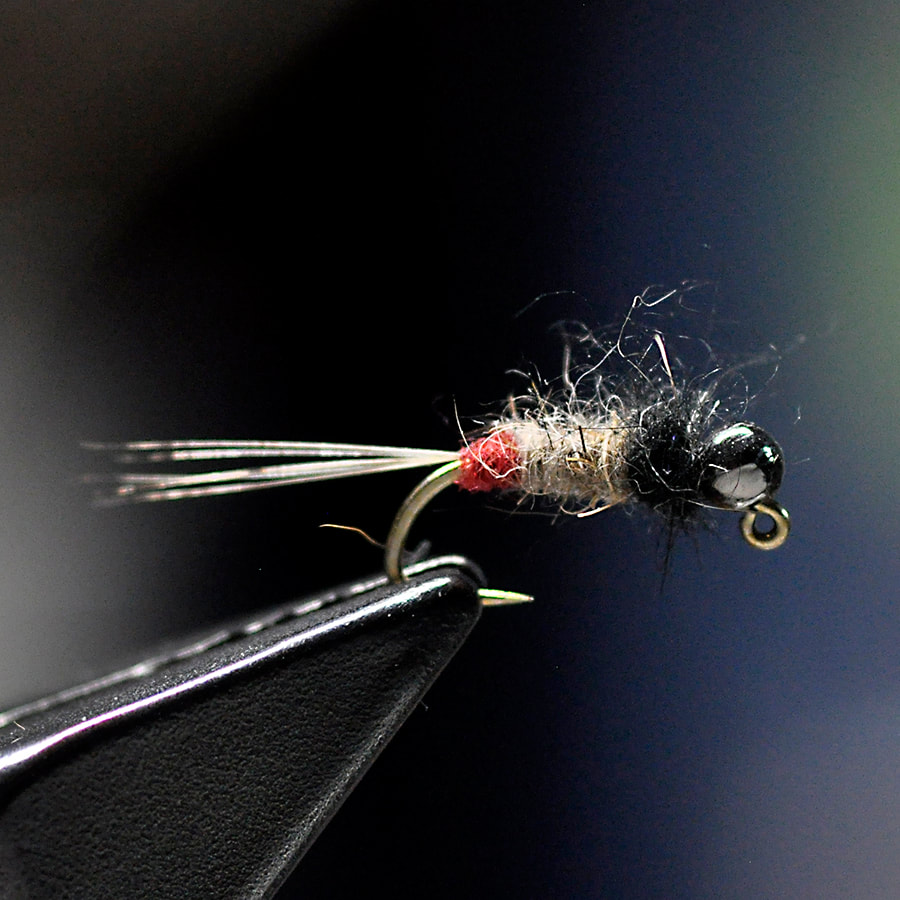Fly of the Month 01.20 - Red Butt Fly Patterns
There is something about a spot of red that attracts trout. Due to a spectrum shift underwater, the color of red takes on a rust brown color at depth. Scientists believe that fish see red as an indication of blood (rust-brown at depth) and have a trigger response to the color as if it is wounded prey and readily available for the taking. This is the angler’s theory behind many fly patterns of which we will introduce four:
Red Ass Soft Hackle
Red Bud Nymph
Arkansas Red Butt
Peacock Red Butt
We were raised to not use such words (considered vulgar in my generation) but millennials and the internet do not sensor. The Red Ass Soft Hackle is a wet fly which is intended to represent an insect rising toward the surface from the larva or nymph stage to emerge or hatch into an adult. The soft hackle provides the appearance of a pupal cocoon or air bubble or possibly a shuck. Fish trigger on this look and the rising motion, thus soft hackle fly patterns in general are very successful fly pattern styles. But add the red spot, the red butt and the fly pattern takes on yet another dimension of appeal. Added confidence for the angler!
The Red Bud Nymph, the Arkansas Red Butt and the Peacock Red Butt each provide a variation of the use of the red spot to add attraction to a nymph fly pattern. The Red Bud Nymph is believed to have originated from the Southern Appalachians from the 1980s and the Arkansas Red Butt of course originated from the Ozarks about the same time. Both were likely derived from the Peacock Red Butt, the most likely original attempt to place a red spot on a nymph fly pattern.
It is amazing how a simple addition which only takes less than an additional minute to tie into an existing fly pattern can provide such an effect on fish and such an improvement in the results of an already successful fly pattern. Dead drift and allow the fly pattern to sink, then let it swing across the current. In shallower waters, a down and across presentation followed by a swing across the stream is highly effective.
One final note – to add to this list, you may take almost any favorite nymph pattern and add a red butt. Top of our list is the Hare’s Ear Nymph and Pheasant Tail Nymph. Be creative!
Red Ass Soft Hackle
Red Bud Nymph
Arkansas Red Butt
Peacock Red Butt
Fly of the Month 01.20
Tom Adams and Alen Baker
References:
Internet; Jack McNeary RRTU Beginner’s Fly Tying Class
Red Ass Soft Hackle
Hook : Wet or Dry Fly
Thread : Danville 70 Denier Red
Body : Peacock Herl with red thread butt
Hackle : Hungarian Partridge from throat
Directions :
There is something about a spot of red that attracts trout. Due to a spectrum shift underwater, the color of red takes on a rust brown color at depth. Scientists believe that fish see red as an indication of blood (rust-brown at depth) and have a trigger response to the color as if it is wounded prey and readily available for the taking. This is the angler’s theory behind many fly patterns of which we will introduce four:
Red Ass Soft Hackle
Red Bud Nymph
Arkansas Red Butt
Peacock Red Butt
We were raised to not use such words (considered vulgar in my generation) but millennials and the internet do not sensor. The Red Ass Soft Hackle is a wet fly which is intended to represent an insect rising toward the surface from the larva or nymph stage to emerge or hatch into an adult. The soft hackle provides the appearance of a pupal cocoon or air bubble or possibly a shuck. Fish trigger on this look and the rising motion, thus soft hackle fly patterns in general are very successful fly pattern styles. But add the red spot, the red butt and the fly pattern takes on yet another dimension of appeal. Added confidence for the angler!
The Red Bud Nymph, the Arkansas Red Butt and the Peacock Red Butt each provide a variation of the use of the red spot to add attraction to a nymph fly pattern. The Red Bud Nymph is believed to have originated from the Southern Appalachians from the 1980s and the Arkansas Red Butt of course originated from the Ozarks about the same time. Both were likely derived from the Peacock Red Butt, the most likely original attempt to place a red spot on a nymph fly pattern.
It is amazing how a simple addition which only takes less than an additional minute to tie into an existing fly pattern can provide such an effect on fish and such an improvement in the results of an already successful fly pattern. Dead drift and allow the fly pattern to sink, then let it swing across the current. In shallower waters, a down and across presentation followed by a swing across the stream is highly effective.
One final note – to add to this list, you may take almost any favorite nymph pattern and add a red butt. Top of our list is the Hare’s Ear Nymph and Pheasant Tail Nymph. Be creative!
Red Ass Soft Hackle
Red Bud Nymph
Arkansas Red Butt
Peacock Red Butt
Fly of the Month 01.20
Tom Adams and Alen Baker
References:
Internet; Jack McNeary RRTU Beginner’s Fly Tying Class
Red Ass Soft Hackle
Hook : Wet or Dry Fly
Thread : Danville 70 Denier Red
Body : Peacock Herl with red thread butt
Hackle : Hungarian Partridge from throat
Directions :
- Mount the hook in the vise
- Begin thread wraps three eyelengths from eye and advance thread to hook bend. Use the thread to build a butt of red when complete, let the bobbin hang
- Select two or three peacock herl feathers and tie in at the hook bend. Tie these in at the base of the feather and advance the thread to the thorax. Wrap the peacock herl forward in tight and touching turns to form the abdomen. Tie off at the thorax and trim away the waste. Let the bobbin hang
- Select a small amount of rabbit or any buggy dubbing and form a noodle. Create a small thorax of dub and let the bobbin hang
- Select a light Hun Partridge feather from the neck area and strip away the fuzz and webby fibers. Hold the partridge by the tip and stroke back the fibers leaving a small triangle to tie in. Tie in and, using hackle pliers, make one and one half to two wraps in tight turns at the dubbing point. Trim the waste feather
- Form a small head using a whip finisher and trim away the thread.



